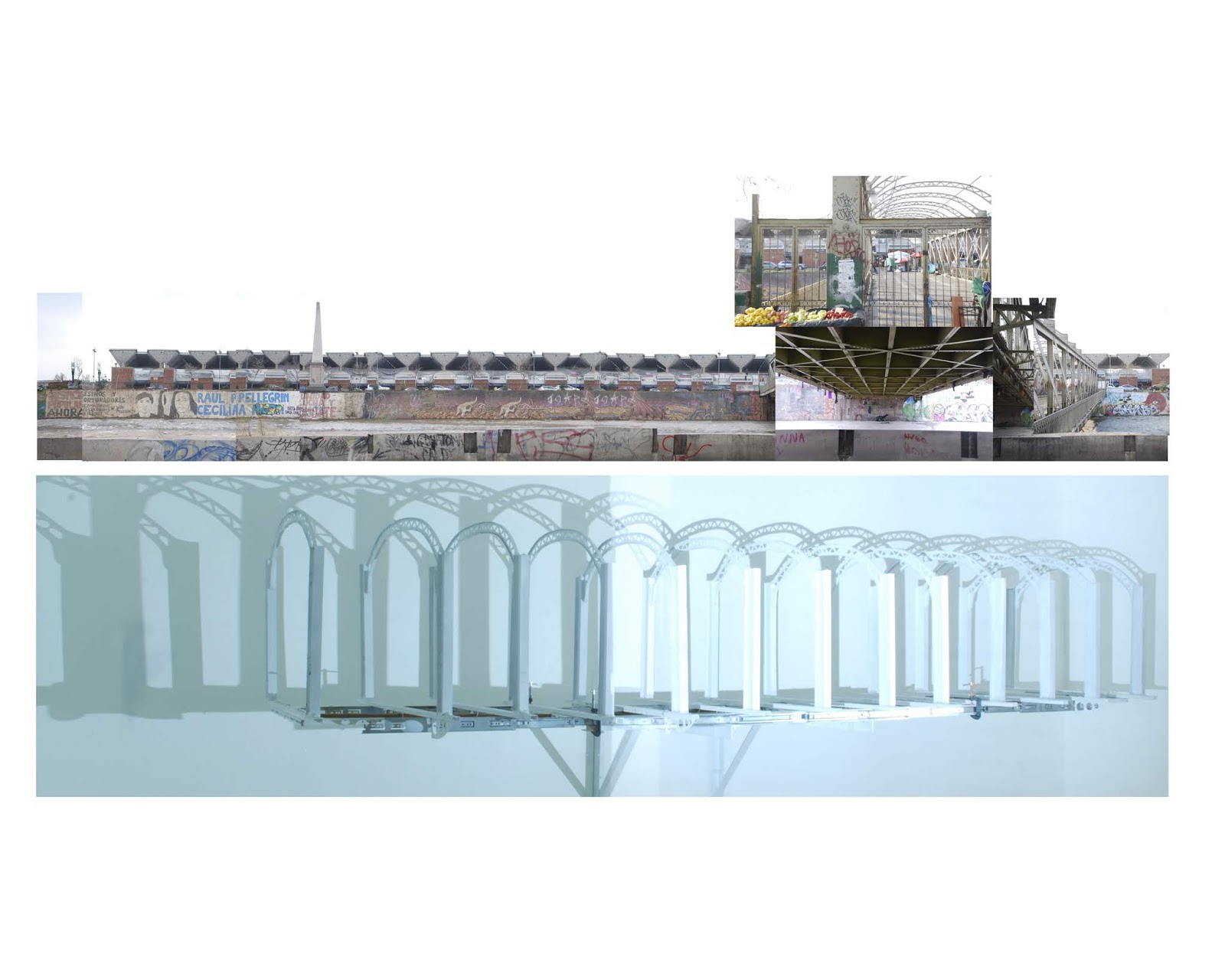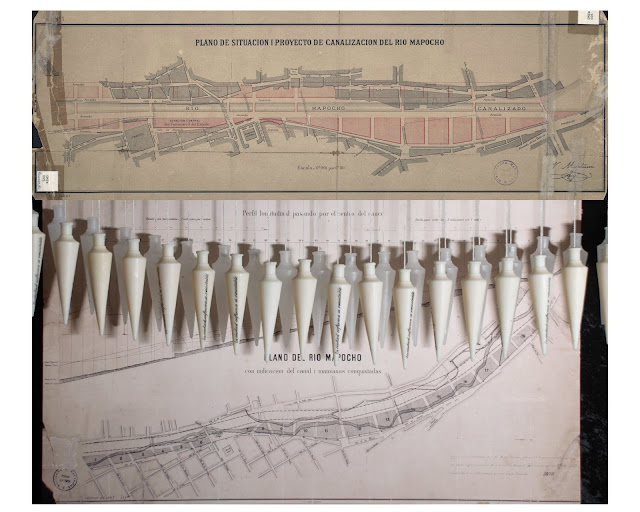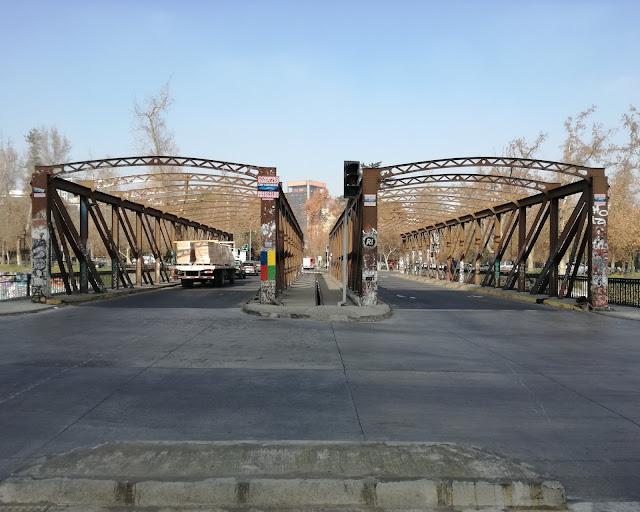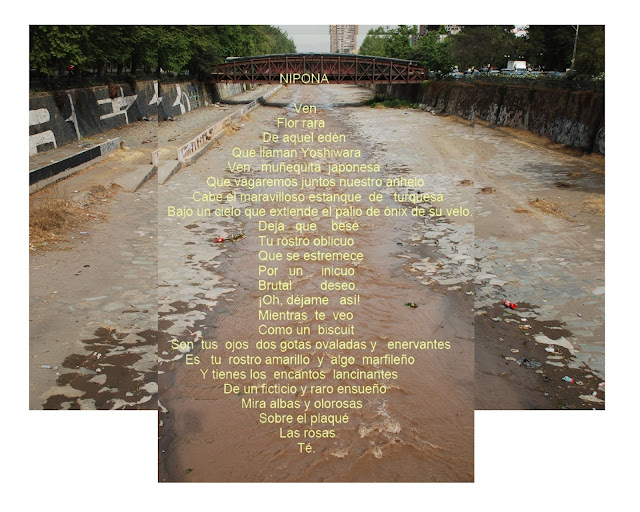Puente Los Carros. Calicantocarros
Historical/cultural context (01/03/20)
Puente (Bridge) Los Carros was named after the wooden carts and the
replacing electric trams that crossed a wooden bridge built in 1870 that was similar in form to the current metal one. Located as a continuation of calle 21 de Mayo, whose
date is from the year 1879 that marks the Battle of Iquique in the asymmetrical
Pacific War that Chile won as the underdog, taking sea access from Bolivia,
and territory from Peru up to Lima that was partially returned. Los Carros is imagined the only bridge of the canalised Mapocho that spans the pre and post modernisation of Santiago – a transitional bridge of the historical to the modern capital city and its
national territory before and after the Pacific War. Like Grandpa’s axe, or Theseus’s
ship, the bridge’s material form has
been completely replaced over time, yet it has an identity in the public
imaginary as being the same bridge. It
is in the same location but of a shorter span – axe becomes tomahawk, ship
becomes yacht. Cart becomes tram and then, most recently, a pedestrian bridge. In
its current state, Los Carros is closed due to structural damage suffered in
the natural disaster of the 2010 earthquake. (image below). It is unlikely to be repaired
in the medium term and, in the massive, purposeful destruction of the post 18 October
social crisis, it’s scheduled repair,
already behind, is postponed again due to higher priorities. It sits like a decaying, disused exhibited
object of its history. This destruction, the bridges uselessness and its bridging history are the
subject of investigation and intervention.
Principle image: Indicative collage as a way of thinking about these subjects.
Given the current social political situation, the proposal will concern the metaphor of "burning bridges" with the military strategy and its social appropriation through the current crisis - historical, cultural, ethical.





Comments
Post a Comment